Este post também está disponível em:
Português
English
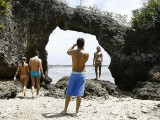
Camamu Bay is an ecological paradise between Morro do São Paulo and Itacaré, it is the third largest bay in Brazil after Guanabara bay in Rio de Janeiro and the Baia de Todos os Santos in Salvador.
What makes this region special is its pristine ecosystem that has remained whole after so much growth in the regions to the north and south – with no pollution, no commercial development, and whose inhabitants continue to live in a way that has little impact on the environment.
Until recently, these waters were the only source of food and the only mode of transportation, and their ancient single-tree canoes are still in use.
To really experience the biodiversity and ecological wonder of Camamu Bay, you should arrange a speedboat to explore the maze of rivers, canals and islands, especially in the southern part.
Camamu Bay is possibly the largest expanse of undeveloped mangrove forest in the entire world.
While shrimp farming has devastated most coastal mangroves in the rest of the planet, this region has remained untouched by commercial interests because of its difficult access.
Fortunately, Brazil designated most of this region as an Environmental Preservation Area before any large-scale devastation could occur.
A boat port for Barra Grande and Camamu Bay, the town of Camamu, on the banks of the Acarai River, opens onto a vast mangrove forest.
Initially inhabited by the Macamamus Indians, its origin dates back to 1560, when Jesuits built the chapel of Nossa Senhora da Assunção de Macamamu – hence the name of the town.
One of the oldest Brazilian cities, Camamu became the largest producer of cassava flour in Brazil.
Built on two floors, just like Salvador, the upper city houses colonial buildings, the largest church in the interior of the state – Matriz de Nossa Senhora da Assunção, dating from the 18th century – and old mansions.
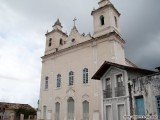
From the viewpoint, there is a beautiful view of the Bay of Camamu, intersected by mangroves.
In the lower part, the fair and the port stand out, where, in 1693, the Town Hall and Jail also functioned.
See the map of the Dendê Coast.
To fully enjoy nature, it is worth taking boat trips along this, the third largest bay in Brazil (Camamu Bay), and getting to know its infinity of untouched islands in the middle of the preserved forest, and the small villages that keep the traditional culture alive.
Another good option is to also head towards the paradisiacal beaches, waterfalls, islets and mangroves of Barra Grande.
Camamu Bay is home to a variety of islands of all sizes.
The third largest bay in Brazil by volume of water, after the bays of Todos os Santos and Guanabara, Camamu Bay is home to a variety of islands of all sizes, as well as beaches, forests and mangroves that are still well preserved.
With constant winds and deep, calm waters, Camamu Bay offers favorable sailing conditions and many safe spots to anchor.
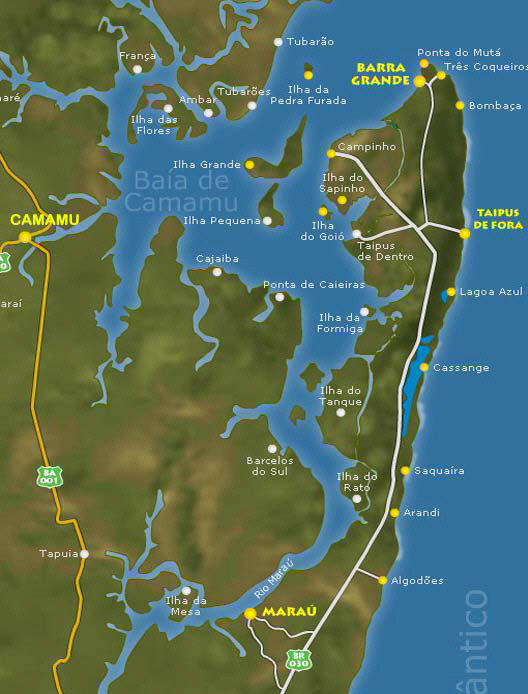
See the map of the Dendê Coast
Videos about Camamu Bay
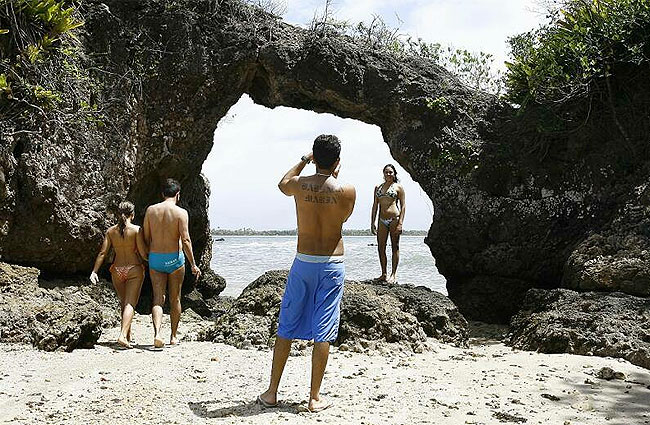

Baía de Camamu na Bahia
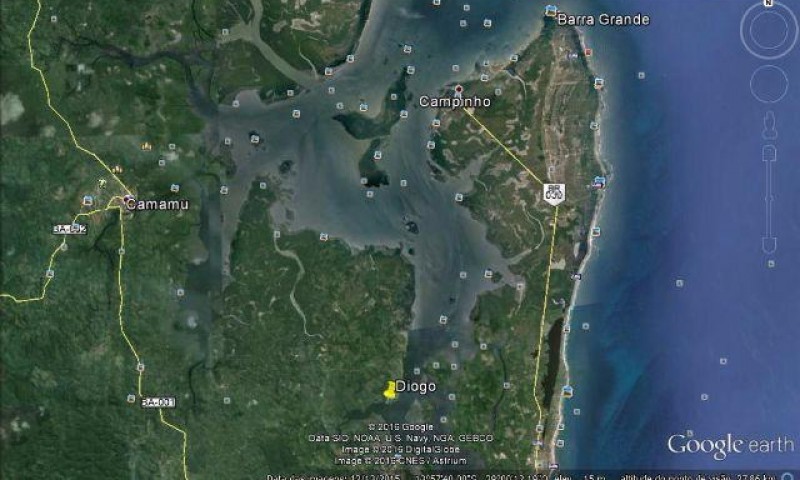
Baía de Camamu e Península de Maraú03:47

Ilha do Goió na Baía de Camamu
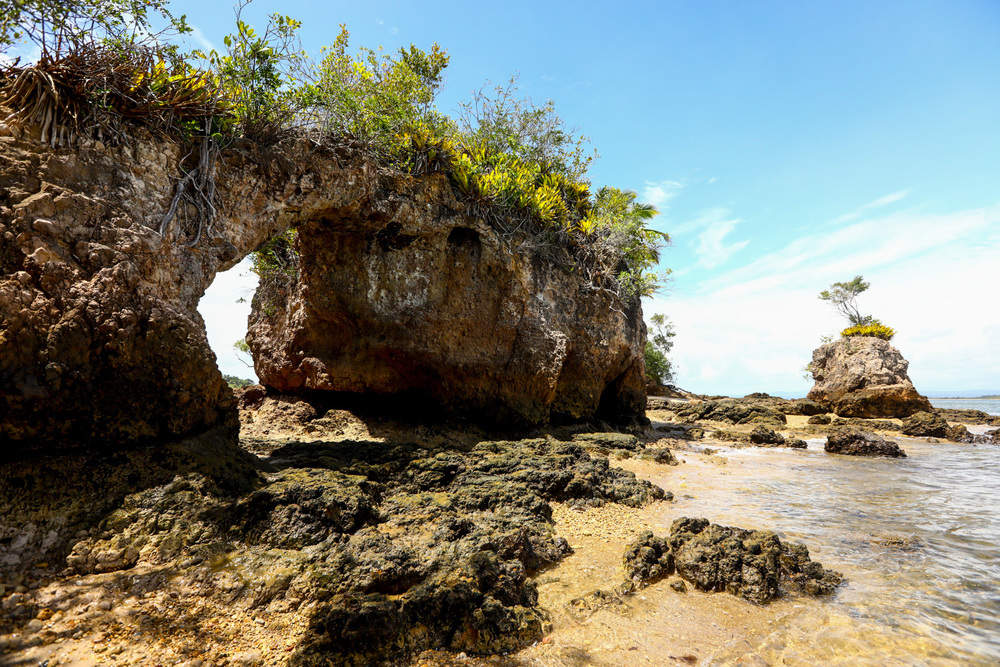
Ilha da Pedra Furada na Baía de Camamu04:56
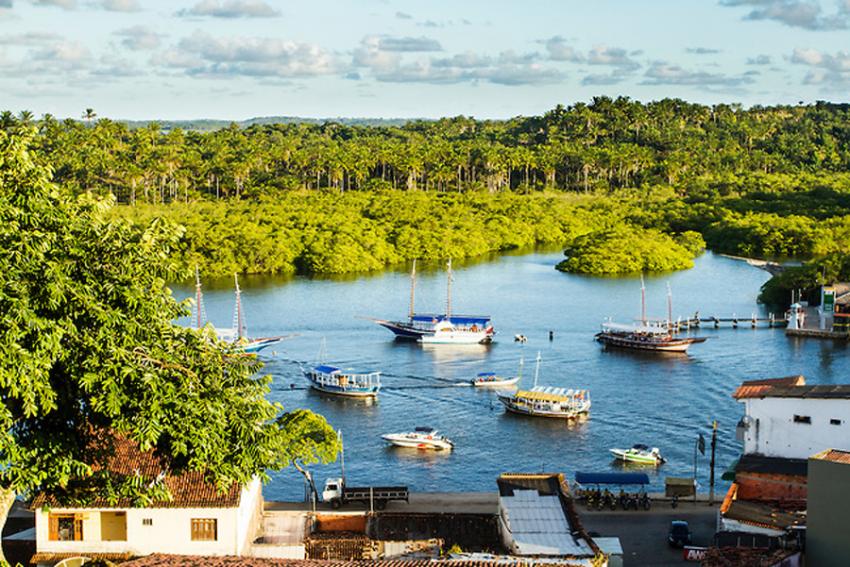
Ilha da Pedra Furada, Ilha Grande e Cajaíba
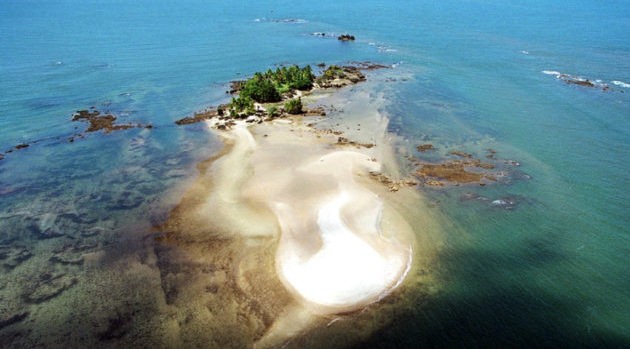
Baía de Camamu - Guia de Turismo05:25
Tourist spots in Camamu Bay
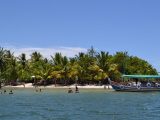
1. WALKS THROUGH THE ISLANDS OF CAMAMU BAY
The boat is the best means of transportation to discover this paradise still little explored by tourism.
You can rent a speedboat or a boat in the ports of Barra Grande and Camamu.
During the tourist season, schooners organize tours for groups.
The tour of Camamu Bay should start in the morning to make the most of the day.
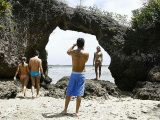
2. THE ISLAND OF PEDRA FURADA
Located 30 minutes by boat from Barra Grande and 1h from Camamu, Pedra Furada Island owes its name to a rock dug by erosion.
The island is quite small. It has a natural spring and a beach with crystal clear waters.
There is only one restaurant serving typical food.
3. CAMPINHO
Located three kilometers from Barra Grande, the village of Campinho is known for the house where Antoine de Saint-Exupéry stayed in the 1930s.
Because it has very deep waters, the site was even considered for the construction of an industrial port, which was eventually transferred to Ilhéus.
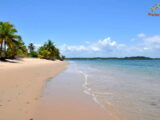
The calm and clear waters, surrounded by reefs and full of fish, make Campinho one of the best places in the region for diving.
4. SAPINHO AND THE ISLAND OF GOIÓ
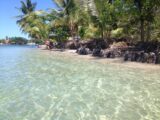
Continuing into the bay, you arrive at the village of Sapinho.
The mangroves are more abundant. It has bars and restaurants serving fried fish, crabs, crabs, lobsters and various moquecas drizzled with palm oil and lots of pepper.
It is a mandatory stop for those who take the schooner tour of the bay. Facing the village, separated by a small arm of the sea, Goió Island has beautiful deserted beaches.
5. THE GREAT ISLAND
It is the largest island in the bay, measuring about 4 km², and the most populated, with approximately 1500 inhabitants. It has a port and several beaches with calm and clean waters.
At the northern tip of the island, Prainha offers a cinematographic setting. There are no cars on the island.
The streets are walking trails. In fact, it is the best way to get to know the island. It has residential houses and some inns.
6. CACHOEIRA DO TREMEMBÉ
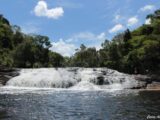
One of the most popular attractions in Camamu Bay is the Tremembé waterfall. It is right in the south of the bay, and the only way to get to the base of the waterfall is by speedboat.
The waterfall is not the highest or widest you will see in your life, but its beauty lies in its picturesque surroundings. The cascade comes from within the Atlantic Rainforest, mixing cold mountain water with warm, brackish bay water, creating a fun area to swim and play.
And you don’t have to walk or swim far… the pilot will leave you literally under the waterfall!
7. ADVENTURING MORE OF CAMAMU BAY
The places mentioned above are the easiest to access from Barra Grande.
Unfortunately, it is not possible to visit all of Camamu Bay in one day.
Those who have time can venture into the bay and visit small places like Barcelos do Sul, Tanque, Cajaíba, Âmbar, Ilha das Flores, Ilha Pequena and more distant places like Rio Maraú and Cachoeira do Tremembé.
CITY OF CAMAMU
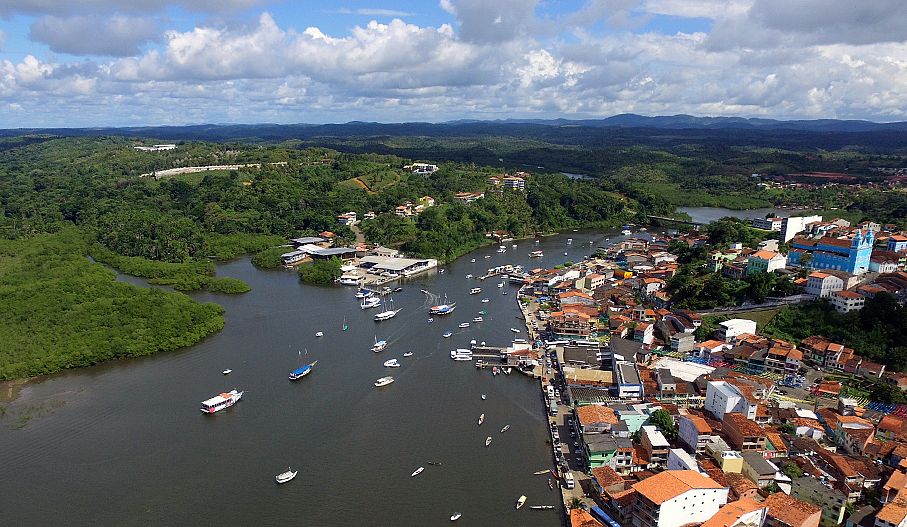
Port of embarkation for Barra Grande and Camamu Bay, the city of Camamu is located on the bank of the river Acaraí in the middle of a very mangrove area.
A former colonial town, Camamu was built on two levels, like Salvador.
In the upper town, churches and old colonial houses. In the lower town, the port and the shops.
For many tourists Camamu is just a place to pass through, but it is worth taking the time to get to know this city steeped in history.
Camamu Bay Travel Guide



















